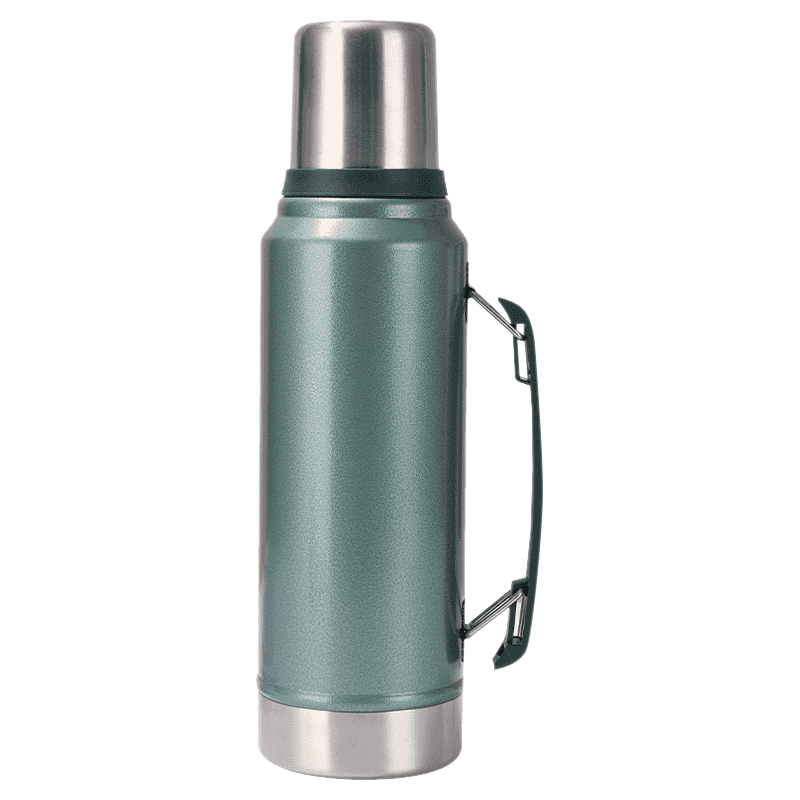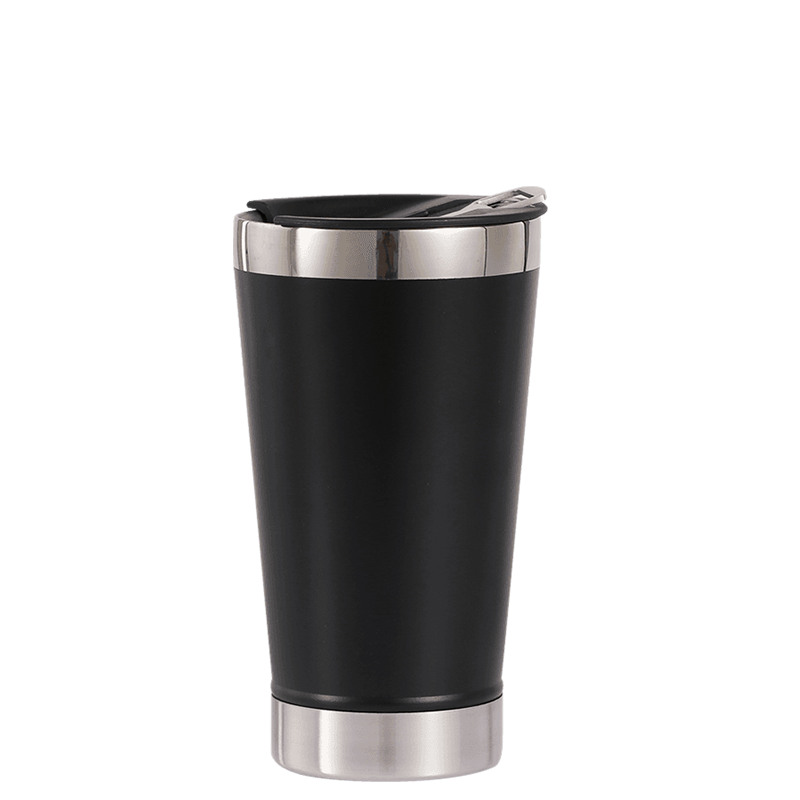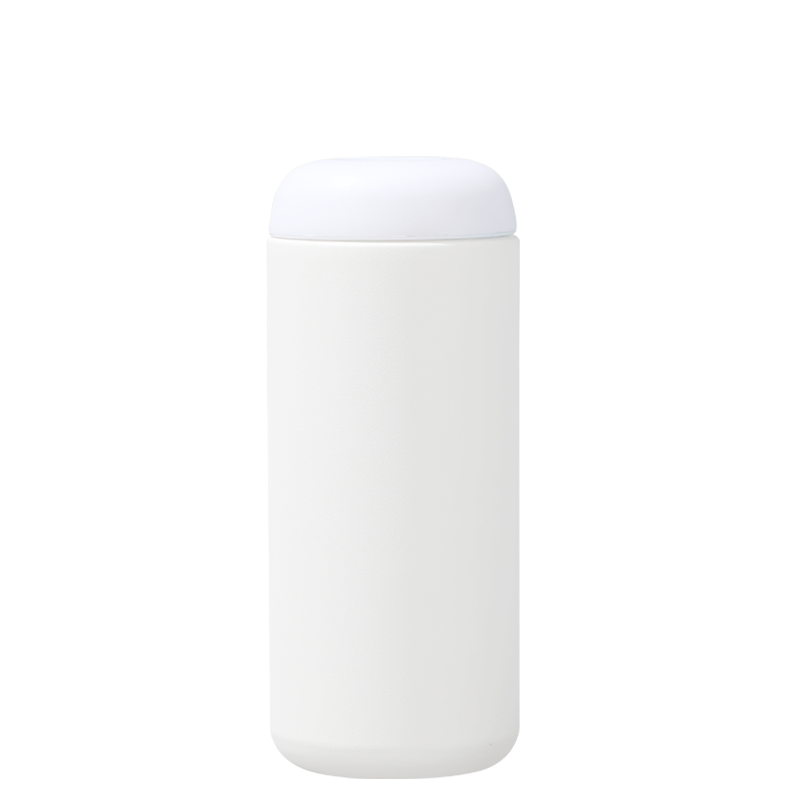
+86-13566758039

Industry News
During the hurried morning commute or during the concentrated work in the afternoon, a drink at just the right temperature can always bring a moment of comfort. Thermos cups with handles are quietly changing people's drinking habits. They are no longer just containers, but reliable life partners. Aijunware, understanding the modern consumer's dual pursuit of quality and convenience, integrates practical technology into everyday designs, bringing warmth within reach.
Why have thermoses with handles become a new favorite in daily life?
While hot coffee in an ordinary mug becomes bland after ten minutes, a thermos cup with a handle can lock in the aroma and temperature for a long time. The secret lies in their innovative double-wall vacuum insulation. The vacuum layer between the two stainless steel walls effectively blocks both heat conduction and convection, preventing hot drinks from cooling down and cold drinks from reheating. The carefully designed handle not only restores the comfortable grip of traditional cups, but also provides a stable grip point in mobile scenarios. Aijunware uses food-grade stainless steel inner liner to avoid the shortcomings of plastic or ceramic materials that easily retain odors, ensuring that every bite is as pure as before. For efficiency-conscious urbanites, this means their morning brew lasts all morning, eliminating the hassle of reheating. For those who value the environment, it's a sustainable choice that reduces paper cup consumption.
What advantage does a handle add to vacuum-insulated drinkware?
A handle changes how a user interacts with a portable beverage vessel in three connected ways: ergonomics, perceived familiarity, and task context. Ergonomically, a handle reduces strain on the fingers and wrist by transferring the mug's weight to a grip that suits the human hand. When a vessel is vacuum-insulated, its walls remain structurally thin compared with heavy ceramic mugs; a properly engineered handle compensates for this by providing confident support for heavier fill levels. From a psychological perspective, a handle evokes the domestic ritual of a home mug while preserving the functional benefits of travel-friendly insulation. Finally, in different task contexts — walking, cycling at low speed, or using a laptop at a desk — a handle provides mechanical stability, which reduces the chance of spills and increases willingness to take longer sips instead of gulping a quickly cooling drink.
How does vacuum insulation actually limit heat transfer?
To understand why a thermos mug with handle keeps liquid temperature stable, break down heat transfer into three modes: conduction, convection, and radiation. In vacuum insulation, the gap between the inner and outer walls is evacuated of air. This evacuation eliminates the medium for conduction and convection, reducing these heat transfer pathways. The thin inner wall contains the hot liquid, while the outer shell remains at near-ambient temperature. Radiation is reduced by adding reflective coatings to internal surfaces; these coatings bounce thermal infrared back toward the liquid. The net result is that less energy flows from the liquid to the environment, so the beverage remains within a desirable temperature range for an extended period. Material choices for the inner wall, the quality of the vacuum, and the lid's sealing geometry all influence the degree of retention.
Which materials are effective for both insulation and flavor neutrality?
Material selection affects insulation, durability, and flavor preservation. High-grade stainless steel is a common choice because it combines structural integrity with low porosity, which prevents absorption of oils and aromas. Stainless grades used in beverage containers are chosen for corrosion resistance and for maintaining a non-reactive surface under repeated exposure to acidic drinks. Plastic components are often present in lids; careful selection of food-safe, low-permeability polymers reduces odor retention and prolongs the lifetime of seals. Ceramic linings exist in some designs to preserve flavor but at the cost of fragility. For commercial products where multiple uses and easy cleaning are priorities, stainless steel paired with robust polymer lids often provides the right compromise between flavor neutrality and durability.
What design aspects of the lid determine leak resistance and ease of use?
Lid performance rests on geometry, materials, and actuation method. Geometry includes the contact surfaces that press against the rim of the inner wall; these surfaces must maintain uniform compression across temperature cycles to prevent leaks. Materials such as silicone gaskets maintain flexibility across a range of temperatures so they retain sealing properties over time. Actuation methods — screw-top, push-button, flip-top, or slide — offer different trade-offs between user convenience and risk of accidental opening. A simple, large-diameter twist closure often provides clarity of operation and a robust seal, while push-button lids deliver one-handed convenience but require careful mechanical design to avoid unintended openings. For commuting, a secondary locking mechanism reduces accidental spills, and for office use, a wide drinking aperture can reduce contact with complex components that trap residue.
What scenarios make a thermos with handles a must-have?
A secure choice for families with children: When mothers hold their babies with one hand, the scald-resistant handle allows them to hold hot tea securely with their other hand, without the worry of it slipping or spilling. Aijunware's wide-mouthed children's mug is easy to clean and comfortable for children to hold.
An office artifact for efficient professionals: During tight meetings, the cup lid with a leak-proof lock prevents documents from getting accidentally wet, and the long-lasting heat preservation prevents the espresso from cooling down before inspiration strikes.
A vitality supply station for sports enthusiasts: the water bottle in the gym bag will no longer leak due to bumps, and the temperature of the cool electrolyte water after exercise can be fully retained by the handle thermos cup.
A safe companion for long-distance driving: When inserted into the car cup holder, the anti-tilt design of the cup bottom is as stable as a rock; when encountering bumpy roads, the double-locking cover completely eliminates the risk of coffee seeping into the seat.
A green badge for environmentalists: Every time you use an Aijunware insulated mug, you're protecting forest resources. Its reusable design aligns with the zero-waste philosophy, and its stainless steel material is recyclable for life.

Can a handle impact a mug's thermal performance?
Yes, but the effect depends on integration. A handle attached externally typically contributes little to heat loss because the vacuum barrier remains intact; however, if the handle is a thermal bridge — for example, bolted through the double wall or formed from a conductive metal that contacts inner surfaces — it can create a path for heat to escape. Designers mitigate this by isolating the handle attachment points with insulating inserts or by using polymeric handles that break conductivity while preserving mechanical strength. There is also an ergonomic trade-off: a compact, well-placed handle that uses a non-conducting material will preserve thermal performance and improve handling, whereas decorative or oversized metal handles may unintentionally reduce retention.
How should capacity and shape be chosen for various use cases?
Capacity and shape are decisions rooted in user behavior. For short trips and desk use, smaller capacities reduce wasted beverage and keep drinks closer to a preferred drinking temperature. For longer commutes or outdoor activities, larger capacities minimize refills but increase weight and can reduce comfort when held for extended times. The outer shape influences how the mug fits in cup holders and backpacks; tapered profiles are friendlier to standard automotive holders, while rectangular or ergonomic curves improve handheld stability. When designing with a handle, balance is crucial: larger mugs require handles with broader clearance and thicker grips to remain comfortable when full. Market segments — office worker, parent, traveler — each demand different capacity trade-offs, and product variants often reflect these differing priorities.
How to choose a Thermos Mug With Handle that's right for you?
Temperature protection is the core
Focus on the insulation process rather than just thickness. High-quality vacuum technology can keep hot drinks hot for over 6 hours and cold drinks cold for over 12 hours. If there's no sloshing sound when gently shaking the cup, it indicates a proper vacuum seal.
The handle design determines the user experience
The curved handle should fit the base of your thumb and have smooth, burr-free edges.
Sealing structure ensures safety
Twist-on lids require testing for a firm opening and closing feel. If they're too loose, they can leak; if they're too tight, they can be difficult to operate with one hand. It is preferred to use a silicone sealing ring with a secondary locking design, such as a push-to-open lid system, which can be opened with a light push of the thumb when driving.
Easy cleaning impacts health
There should be fewer than three removable parts to avoid trapping dirt. The wide mouth design allows easy access for hand scrubbing.
Scenario Adaptation Enhances Value
Commuters can choose a cup with the appropriate diameter to fit their bike frame. Office users can choose a model with a ceramic liner to preserve the original coffee aroma. Outdoor activities require a hook design for convenient backpack hanging.
How do maintenance and cleaning practices affect product longevity and user safety?
A long-lived thermos mug with handle is the product of sound cleaning habits and serviceable design. Removable lids that disassemble into a few components simplify access to crevices where residue and oils collect. Materials should tolerate regular exposure to detergents and repeated thermal cycles without dimensional change. Avoiding abrasive cleaners and metal scouring pads preserves surface treatments and seals. For polymeric gaskets and internal coatings, manufacturers often recommend hand washing to extend life, though many stainless-steel bodies tolerate dishwasher cycles. From a safety perspective, regular inspection of gasket integrity and locking mechanisms prevents accidental spillage and bacterial accumulation in hidden seams.
How to maximize the value of a Thermos Mug With Handle on your commute?
In a crowded subway, the ring handle can be hung on the backpack strap to free your hands; when driving at high speed, the one-handed opening function allows you to drink water without distracting your driving attention. This heat-retention capability maintains homemade lattes at serving temperature during travel, ensuring the milk foam remains consistent when arriving at work. Compared to buying takeout coffee every day, a thermos can save nearly 100 paper cups a year, which is a win-win for both economic and environmental reasons.
How do handles improve the user experience?
For situations where hands are inconvenient or one-handed operation is required, the handle can provide better stability. It can also effectively reduce the risk of spilling contents in environments prone to shaking, such as vehicles, buses, or cycling. The handle is not just a decoration - its reasonable shape and material selection combine the grip feel, force dispersion and cup temperature control, bringing a more natural grip posture and reducing the impact on the cup's insulation layer when holding.
Do handles affect insulation or durability?
How the handle is attached determines its effect on the double-wall vacuum insulation. A common approach is to secure the handles with an outer shell to maintain continuity of the vacuum layer; another approach is to add support structures to the outer layer to distribute force. Correct material selection and assembly process can maintain heat preservation time and enhance drop resistance without destroying the sealing structure. For brands and supply chains, this means investing more in process validation of molds and welding processes to ensure sealing reliability after long-term use.
Make warmth a way of life
Choosing a Thermos Mug With Handle is essentially a choice to respect your time—saving yourself the hassle of waiting for repeated reheating, freeing up more time for focused concentration. It's choosing intentional living—where lukewarm coffee becomes obsolete, and aromatic coffee is yours to savor.
Aijunware believes that good design should be silently integrated into daily life, conveying a solid sense of security in the arc of contact between the palm and the cup wall, and in the crisp sound of each opening and closing of the lock. Feeling the warmth through the handle in your palm: technology's thoughtful tribute to life's simple comforts.
Your email address will not be published. Required fields are marked *








* Your email is safe with us, we don't spam.


Our company's products include vacuum flasks, beer mugs, coffee mugs, car tumbler, fire stove and tensile parts, etc.
Phone: +86-13566758039
Tel: +86-0579-87171178
Fax: +86-0579-87171178
E-mail: [email protected]
Add: No.29, Qiaodong Road, Qiaotouzhou Village, Longshan Town, Yongkang, Jinhua, Zhejiang, China.

 English
English 中文简体
中文简体 日本語
日本語 Français
Français Español
Español